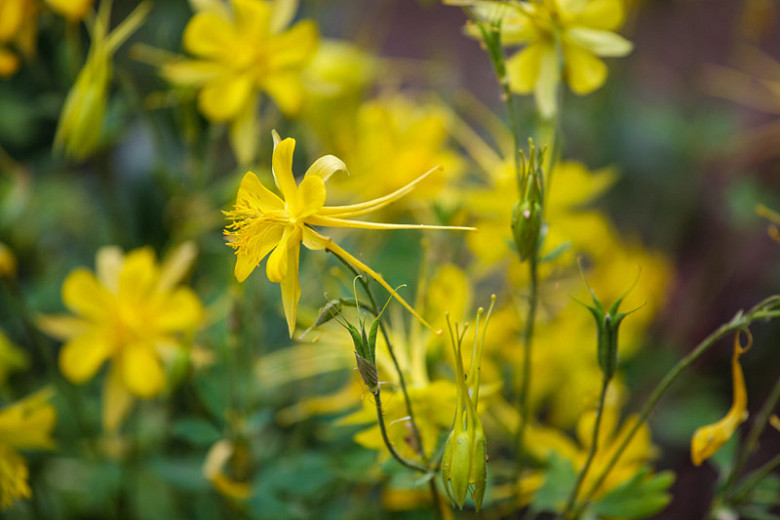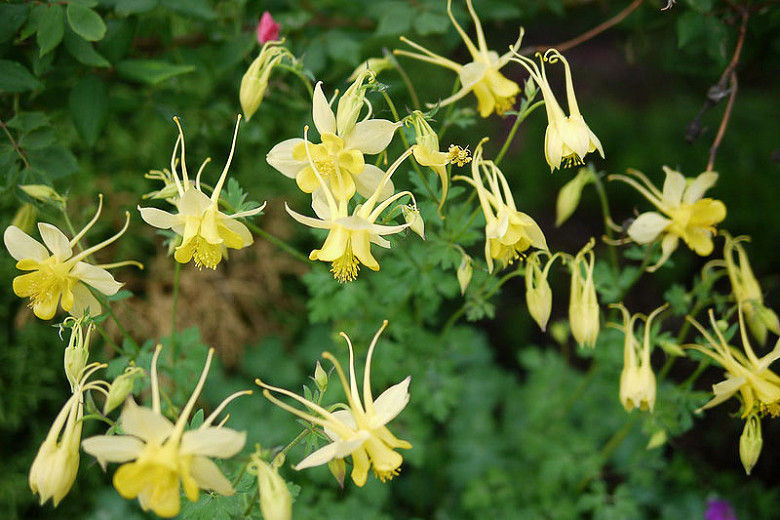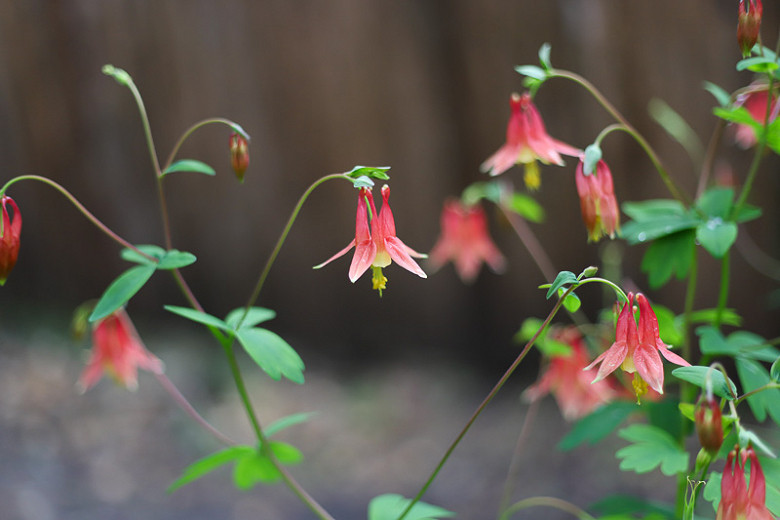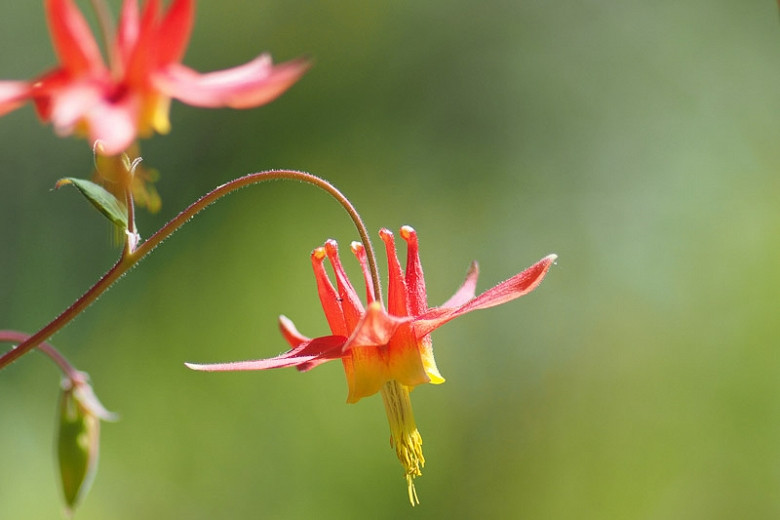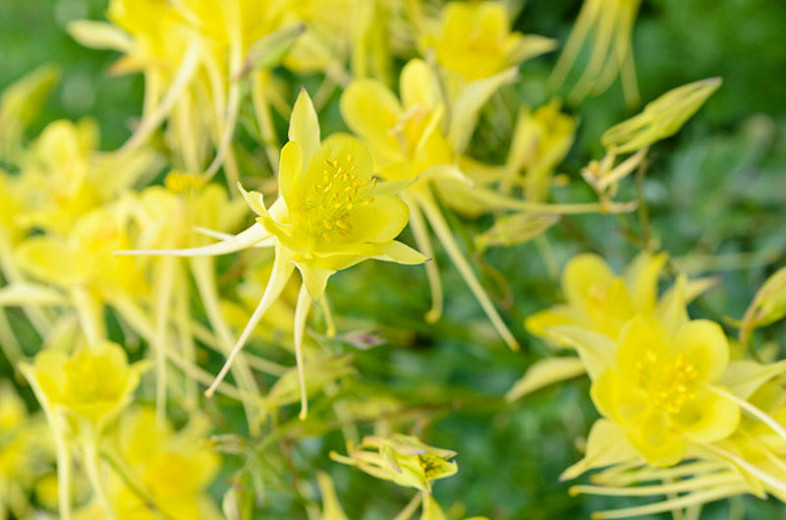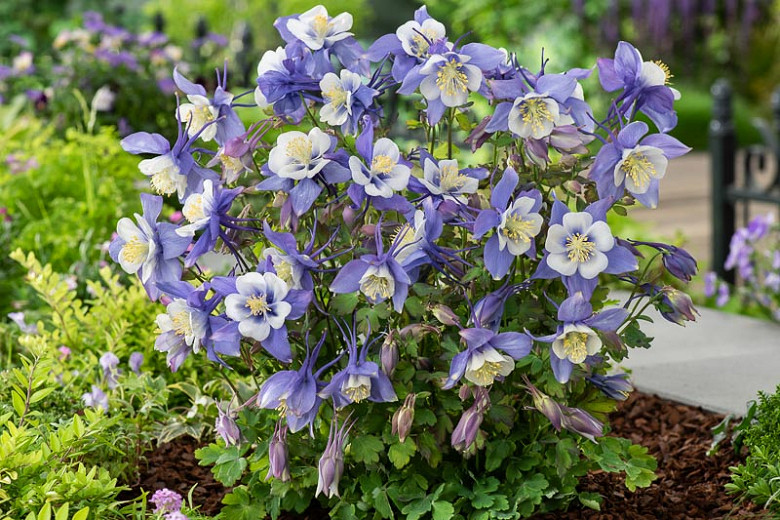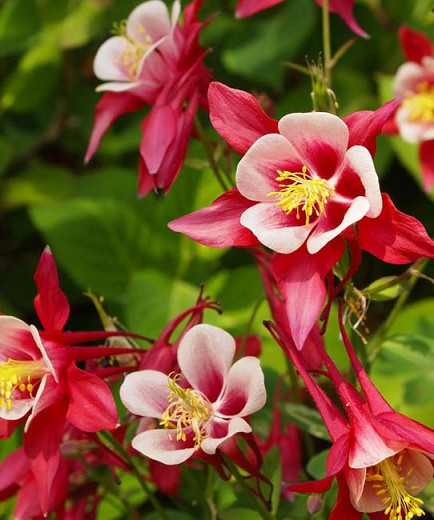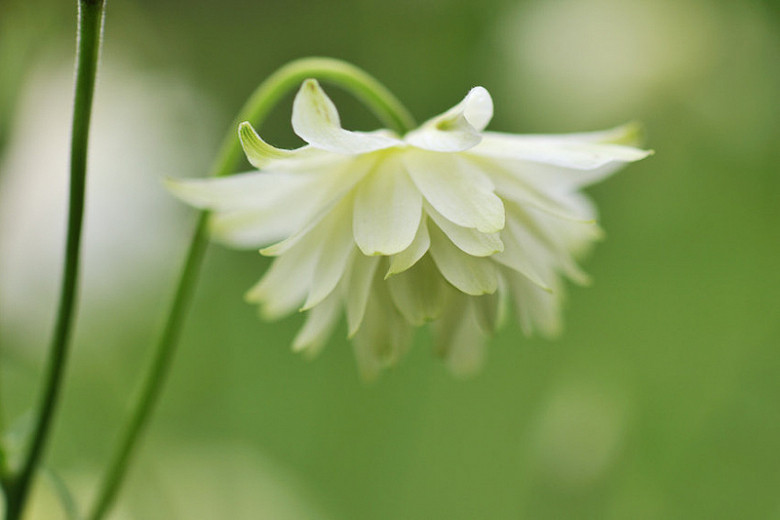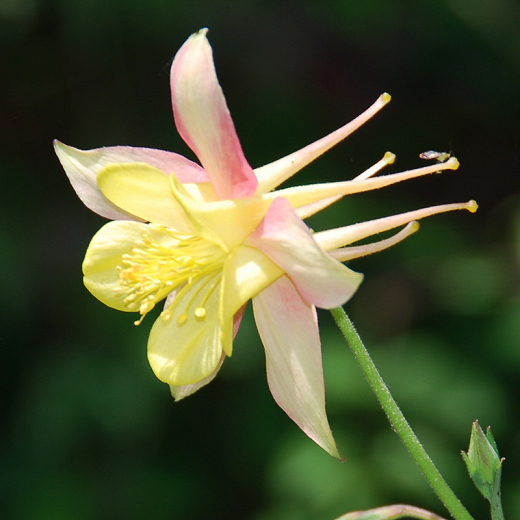Aquilegia chrysantha (Golden Columbine)
A popular garden columbine, Aquilegia chrysantha (Golden Columbine) is a vigorous, clump-forming perennial boasting masses of handsome, bright golden-yellow flowers, up to 3 in. across (7 cm), with long, swept back spurs and a bouquet of yellow anthers. Held erect rather than nodding, they rise on long stems above the bushy foliage of divided and fern-like, rich emerald green leaves and bloom for weeks with peak blooms varying from late spring to late summer. The blossoms are pollinated by moths, butterflies, and bees. Prized for its showy flowers, relatively long blooming period, and fine-textured foliage, this southwestern US native is perfect for brightening dark corners of shade gardens. It is also most dramatic when cascading over a boulder or a wall.
- Grows up to 3-4 ft. tall (90-120 cm) and 1-2 ft. wide (30-60 cm). Will self-seed readily in good garden soils if flowers are not deadheaded.
- Performs best in light to moderate shade, in fertile, moist, well-drained soils. Golden Columbine tolerates heat and can tolerate a considerable amount of sun. However, in full sun, it can become stressed, with faded leaves. Seriously dislikes poorly drained soils. May go dormant during drought, but minimal moisture and adequate shade can prevent this.
- Attracts bumblebees and butterflies, but is ignored by rabbits and deer!
- Easy to grow, this plant is a welcomed addition to beds and borders, cottage gardens, shade gardens or naturalized areas. Makes good cut flowers!
- Keep an eye out for aphids, powdery mildews and Aquilegia downy mildew.
- May be grown from seed sown directly in the garden in spring (after danger of frost has passed), late summer or early autumn.
- Remove flowering stems after bloom to promote additional bloom. Cut back after flowering.
- Native to Texas, New Mexico, Utah, Arizona and Colorado.
- Contact with the sap may irritate the skin.
Requirements
| Hardiness | 3 – 8 |
|---|---|
| Heat Zones | 1 – 8 |
| Climate Zones | 1, 1A, 1B, 2, 2A, 2B, 3, 3A, 3B, 4, 5, 6, 7, 8, 9, 10, 11, 12, 13, 14, 15, 16, 17, 18, 19, 20, 21, 22, 23, 24 |
| Plant Type | Perennials |
| Plant Family | Aquilegia |
| Exposure | Full Sun, Partial Sun |
| Season of Interest | Spring (Mid,Late)Summer (Early,Mid,Late)Fall |
| Height | 3' – 4' (90cm – 120cm) |
| Spread | 1' – 2' (30cm – 60cm) |
| Spacing | 18″ – 24″ (45cm – 60cm) |
| Water Needs | Average |
| Maintenance | Low |
| Soil Type | Clay, Loam, Sand |
| Soil pH | Acid, Alkaline, Neutral |
| Soil Drainage | Moist but Well-Drained |
| Characteristics | Cut Flowers, Showy |
| Native Plants | United States, Rocky Mountains, Colorado, Utah, Southwest, Arizona, New Mexico, Texas |
| Tolerance | Deer, Rabbit |
| Attracts | Bees, Butterflies |
| Garden Uses | Beds and Borders, Underplanting Roses and Shrubs |
| Garden Styles | City and Courtyard, Informal and Cottage, Prairie and Meadow |
